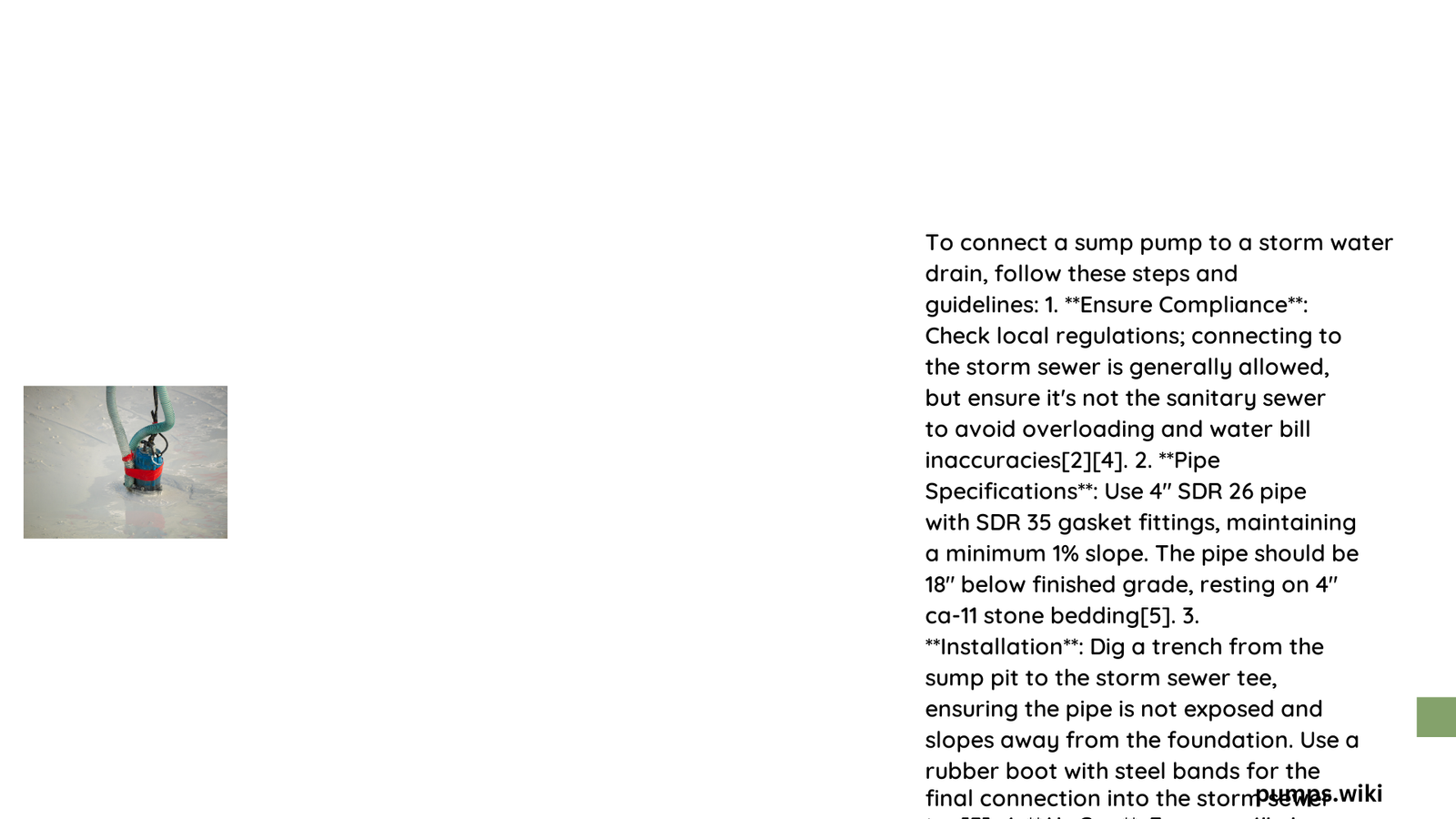Connecting a sump pump to a storm water drain requires careful navigation of local regulations, technical considerations, and proper installation techniques. Homeowners must understand specific municipal codes, pipe requirements, and environmental guidelines to ensure a compliant and effective drainage solution that protects both property and local infrastructure.
What Are the Legal Requirements for Sump Pump Drainage?
Navigating the legal landscape of sump pump drainage is crucial for homeowners. Different municipalities have specific regulations governing how and where sump pumps can discharge water.
Key Legal Considerations
- Municipal Codes: Each locality has unique requirements
- Permit Necessities: Often require official documentation
- Inspection Mandates: Professional verification of installation
| Jurisdiction | Permit Required | Typical Fee | Inspection Process |
|---|---|---|---|
| Massachusetts | Yes | $25-$50 | Drain Department Review |
| Local Municipalities | Varies | Varies | Professional Inspection |
How Do You Prepare for Sump Pump Connection?

Proper preparation involves several critical steps:
- Verify Local Regulations
- Contact municipal building department
- Request specific storm water drain connection guidelines
-
Obtain necessary permits
-
Assess Drainage Infrastructure
- Evaluate existing storm water drain capacity
- Determine appropriate pipe diameter
- Check soil conditions and drainage slope
What Materials Are Needed for Connection?
Essential materials include:
- Piping
- 4-inch diameter PVC pipe
- Non-corrosive materials
-
Appropriate length for drainage route
-
Connection Components
- Backflow prevention valve
- Pipe fittings
- Sealants and connectors
What Are the Installation Best Practices?
Technical Installation Guidelines
- Maintain minimum 10-foot distance from building foundation
- Ensure proper slope for gravity-assisted drainage
- Install cleanout access points
- Use non-perforated piping for storm water discharge
What Potential Challenges Should You Anticipate?
Potential installation challenges include:
- Underground utility interference
- Soil composition limitations
- Water table variations
- Local topographical constraints
Mitigation Strategies
- Conduct professional site survey
- Use flexible piping solutions
- Implement additional drainage mechanisms
- Consider alternative discharge methods
How Much Will Connection Cost?
Estimated Cost Breakdown:
– Materials: $100 – $500
– Labor: $200 – $1,000
– Permits: $25 – $100
– Total Estimated Investment: $325 – $1,600
What Are Common Mistakes to Avoid?
- Connecting to sanitary sewer system
- Inadequate pipe sizing
- Ignoring local building codes
- Improper slope configuration
- Neglecting backflow prevention
Recommended Professional Consultation
While DIY installation is possible, professional consultation ensures:
– Code compliance
– Optimal system design
– Long-term performance
Expert Recommendations
- Hire licensed plumbing professional
- Request multiple installation quotes
- Verify contractor’s municipal code knowledge
Final Considerations
Successful sump pump storm water drain connection requires meticulous planning, technical understanding, and strict adherence to local regulations.
Key Takeaways
- Prioritize legal compliance
- Invest in quality materials
- Consider professional installation
- Regular maintenance is crucial
References:
– Massachusetts Plumbing Regulations
– Municipal Drainage Guidelines
– Sump Pump Installation Best Practices
